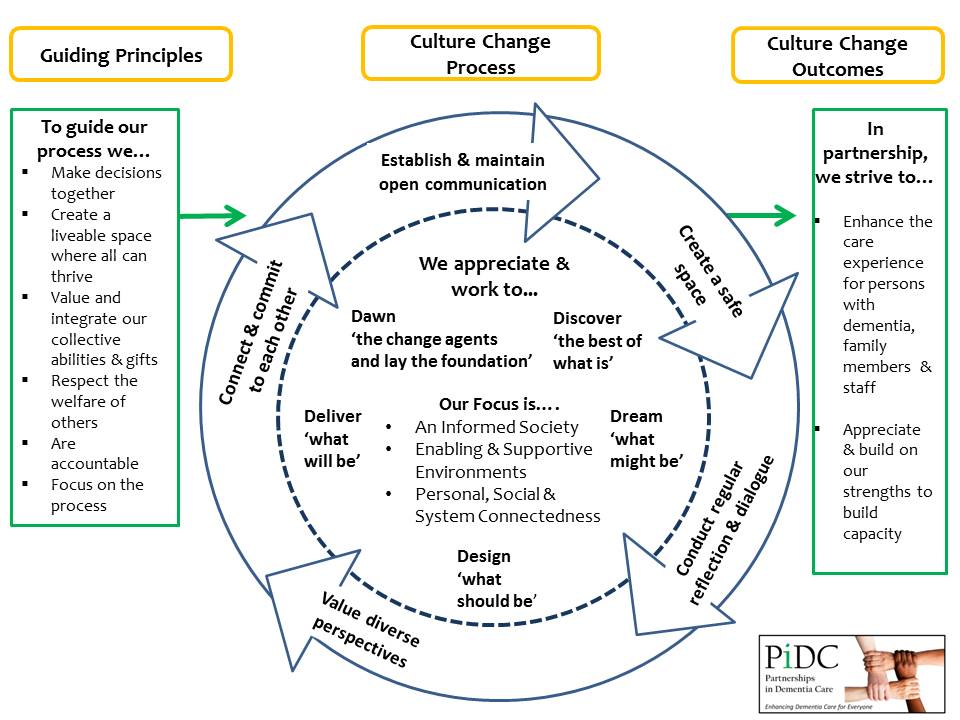What Ideas Inform our Philosophy?
To establish a strong relationship centered and partnership approach, the Partnerships in Dementia Care (PiDC) Alliance project is guided by three frameworks. Each offers a unique contribution to our Culture Change approach. These are:
-
Authentic Partnerships—the way we relate to one another throughout the process and in all of our work. Authentic Partnerships focuses on incorporating and valuing the voices of all those involved in the care process.
-
Appreciative Inquiry—the five step process that guides our path. A process which uncovers what is working well for a group or organization and works to build on strengths.
- Alzheimer’s Disease and Related Dementias (ADRD) Framework—which aims to foster communities that are supportive, connected and where all partners are informed.
PiDC Alliance Guiding Principles
We have 6 guiding principles which are informed by each of the above approaches. These are:
- Making decisions together
- Creating a livable space where all can thrive
- Valuing and integrating our collective abilities and gifts
- Respecting the welfare of others
- Being accountable
- Focusing on the process
Theoretical Framework for Guiding Culture Change
Recognizing the need for culture change initiatives to be grounded in strong theoretical foundations, the PiDC Alliance set out to identify key frameworks that had interdependent, collaborative relationships at their core. This process lead to the integration of the principles and tenets of four key theoretical frameworks – the Authentic Partnership Approach, Appreciative Inquiry, Alzheimer’s Disease and Related Dementias Planning Framework, and Participatory Action Research, which serve to guide all of the work within the Alliance.

For more information on the theoretical frameworks guiding our work please refer to:
Dupuis, S.L., McAiney, C.A., Fortune, D. B., Ploeg, J., & de Witt, L. (2014). Theoretical foundations guiding culture change: The work of the Partnerships in Dementia Care Alliance. Dementia Online First, January 13, 2014. Available from Sage Journals Online